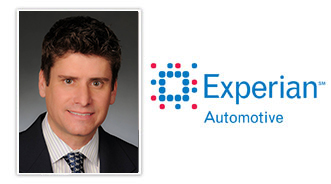Length of Ownership Returning to More Normal Levels; New Registrations Continue Slow Climb

By subscribing, you agree to receive communications from Auto Remarketing and our partners in accordance with our Privacy Policy. We may share your information with select partners and sponsors who may contact you about their products and services. You may unsubscribe at any time.
SCHAUMBURG, Ill. –
The average age of vehicles on the road continued to rise during the last quarter of 2012, according to data from Experian Automotive.
During a webinar last week, the company reported that the average age of vehicles in the fourth quarter of 2012 was 10.4 years, up from 10.2 in the same period of 2011.
Leading the webinar was Jeffrey Anderson, director of consulting and analytics, who presented the company’s Automotive Industry Insights: Q4 2012 report.
“You can see that (age) has steadily increased for the vehicles on the road,” Anderson said in last week’s webinar.
And though dealers may see this trend as a warning sign, the news isn’t all bad.
Anderson reported that the average length of ownership for new vehicles is shrinking once again, which may mean more trade-ins for dealers in the future.
Subscribe to Auto Remarketing to stay informed and stay ahead.
By subscribing, you agree to receive communications from Auto Remarketing and our partners in accordance with our Privacy Policy. We may share your information with select partners and sponsors who may contact you about their products and services. You may unsubscribe at any time.
The executive offered some comparison, explaining that in 2004, the average length of ownership was 46 months. In 2009, after the recession, this number jumped to 69.8 months.
But this past year’s figures are returning to more normal levels. In 2012, the average length of ownership for new vehicles was 66.2. months, down from 68.1 in 2011.
“In 2004, there was a lost more leasing going on in the marketplace, and people were turning their vehicles over more quickly; the average length of ownership was less than four years,” Anderson said.
“It really hit a peak in 2009 of almost 70 months … again, when we talk about the new-vehicle market slowing down, people were keeping their vehicles longer, and then you can see in 2011 and 2012, it has returned to just over 66 months of ownership.”
Anderson also touched on vehicle segment and brand data, noting that full-sized pickups dominate the American highways by far, coming in at about 15 percent of light duty vehicles as of the end of 2012.
“This is pretty much what we see every quarter,” Anderson said.
The closest following segment was standard mid-range cars, which make up 12 percent of the light duty vehicles on the road, according to Experian.
Interestingly, even with ever-expanding interest in fuel efficient and alternative fuel vehicles, hybrids still only represent 1.03 percent (nearly half are Prius) of current vehicles in operation last year.
As for brands on the road, as of Dec. 31, 2012, nearly 60 percent of all vehicles in operation are domestic brands, with General Motors taking the lead with 26.9 percent.
Next up was Ford, with 19.1 percent, and Chrysler with 12.4 percent. The only import brand that comes close is Toyota, with 12.4 percent.
New Registrations Continue Slow Climb
Anderson also explained that U.S. vehicle registrations are continuing their slow climb closer to pre-recession levels.
For pre-owned vehicles, registrations were up in the first quarter of 2012, at around 11 million new registrations, which interestingly, is far above pre-rescession levels.
That said, used-vehicle registrations fell back down to little over 8 million in Q4 of 2012.
Anderson explained that for used-vehicle registrations, we didn’t see as much volatility with increases as on the new side, but more volatility due to seasonality instead, which can explain the quarter-by-quarter fluctuation.
On the other hand, Experian data shows that 2012 garnered a little over 14 million new-vehicle registrations, edging closer to 2007’s level of 15 million new vehicle registrations.
“When we are comparing 2009 to 2012, it’s about a 40-percent increase … that’s quite a jump,” Anderson added. “In our forecasting for 2013, we are predicting over 15 million new registrations, and we will be tracking that quarter-by-quarter.”
In conclusion, Experian reported that growth in new-vehicle registrations continues, with Q4 of 2012 having a strong percentage gain of 9.4 percent when compared to the same period of 2011.
And annual registrations were up more than 1.5 million units versus 2011.
Editor’s Note: Stay tuned to Auto Remarketing e-newsletters for more insight from Experian’s Automotive Industry Insights: Q4 2012, touching on brand loyalty, purchase frequency and market share.


